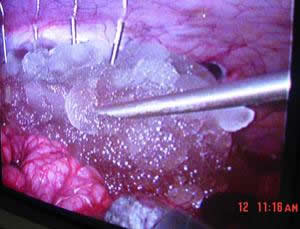Published: February 18, 2009

Techniques that rapidly chill the brain could prevent damage and even aid resuscitation after a heart attack (Image: Argonne National Laboratory)
We all know that a cool cloth applied to the forehead can ease a headache, but now researchers are investigating whether technologies that cool the brain itself could prevent brain damage following a stroke or cardiac arrest. Similar techniques could also protect the heart and kidneys from damage during surgery. Link to read full articleÂ
Source: The New Scientist
Published: February 12, 2009
A study by a University of Glasgow psychologist, examining whether personality is related to facial appearance, has found that women’s faces are easier to read than men.
Published today (Thursday 12 February) in the New Scientist magazine, the experiment reveals that women’s faces “give away far more than men”. [continue reading…]
Published: January 16, 2009
 Why be miserable? OK, so it’s January and you’re feeling fat and broke after the excesses of the holiday season, but there’s really no need. Misery is inconvenient, unpleasant, and in a society where personal happiness is prized above all else, there is little tolerance for wallowing in despair. Especially now we’ve got drugs for it. Jessica Marshall questions whether sadness is a crucial part of being human and whether we should embrace our miserable side.
Why be miserable? OK, so it’s January and you’re feeling fat and broke after the excesses of the holiday season, but there’s really no need. Misery is inconvenient, unpleasant, and in a society where personal happiness is prized above all else, there is little tolerance for wallowing in despair. Especially now we’ve got drugs for it. Jessica Marshall questions whether sadness is a crucial part of being human and whether we should embrace our miserable side.
Link to read this article
Source: New Scientist
Image Credit: Getty Images
Published: December 30, 2008
If you live in the northern hemisphere, this is probably not your favourite month. January tends to dispirit people more than any other. We all know why: foul weather, post-Christmas debt, the long wait before your next holiday, quarterly bills, dark evenings and dark mornings. At least, that is the way it seems. For while all these things might contribute to the way you feel, there is one crucial factor you probably have not accounted for: the state of mind of your friends and relatives. Recent research shows that our moods are far more strongly influenced by those around us than we tend to think. Not only that, we are also beholden to the moods of friends of friends, and of friends of friends of friends – people three degrees of separation away from us who we have never met, but whose disposition can pass through our social network like a virus.
Read the full New Scientist article
Source: New Scientist


